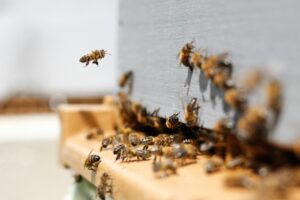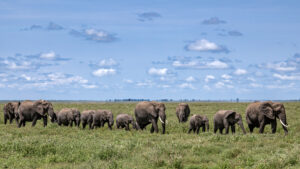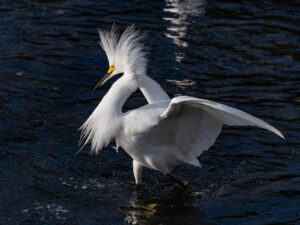Learn About their Lives and Tribal Traditions
When you book your safari with Wanderful Tanzania, not only will you be immersed in the beautiful scenery and incredible wildlife, but you will also have a chance to meet and interact with some of Tanzania’s indigenous people as well.
There are more than 3,000 tribes on the African continent and more than 150 different tribes in Tanzania. While it would take a lifetime to become familiar with each of them, here is information on the rich history, culture and traditions of some you may interact with during your travels.
Datoga Tribe
The Datoga people believe themselves to be one of the oldest tribes in Africa, even as the Maasai and Bushmen also claim the same. Dating back approximately 3,000 years with an origin in Ethiopian and South Sudanese highlands, ancestors travelled south into Kenya and Tanzania. The original Nilotic group split into the Kalenjin people in Kenya and the Datoga who settled in Tanzania near Lake Eyasi. There are approximately 30,000 Datoga throughout Tanzania today.
As cattle breeders and blacksmiths, the Datoga sometimes clash with the Maasai because the Maasai believe all livestock in Africa originally belonged to them and thus, take them from neighboring tribes like the Datoga from time to time.
The Datoga is a more peaceful tribe. They worship ancestors and believe in the existence of spirits and in a single deity named Asita. They are said to practice divination, rain-making, witchcraft and sorcery.
The culture is patriarchal in nature and they practice polygamy, but as a formality, men typically ask the first wife for permission to take another wife even though she cannot answer “no.”
They have a semi-nomadic lifestyle, moving with their cattle. While their diet is mostly dairy based, the meat, fat, blood, milk, hide, horns, tendons, and dung of every animal has either a practical or ritual purpose.
Tattoo markings of circular patterns around the eyes is a unique marking of the Datoga. Women sometimes have markings on their shoulders. As a rule, they wear traditional dress such as a red colored “Maasai blanket.” Women wear leather capes, skirts made of leather strips, or a red piece of woven cloth. It is common to see them with metal neck, arm, ear and ankle ornaments.
Hadza Tribe
Living near Lake Eyasi in the Rift Valley, the Hadza are one of the last remaining hunter-gather tribes on Earth. They are descendants of Tanzania’s aboriginal hunter-gatherers who have occupied their land for thousands of years. They are the only tribe allowed to hunt in The Serengeti.
With approximately 1,300 tribe members, the Hadza remain an important study focus for anthropologists because “they represent a modern link to ways of human existence and survival largely abandoned by most of humanity.” Unlike the Maasai and Datoga, they do not raise livestock. They also do not grow crops or store food. Their survival depends on by hunting with hand-made bows and arrows and foraging for edible plants. Their diet can be categorized into five main categories: tubers, berries, meat, baobab, and honey.
While men go out and bring back prey to feed the family, the women and children collect fruits, berries and roots. which is in addition to their diet. Boys are taught to hunt from a very young age to become skilled hunters; their hunting style is a very inventive and resourceful process.
Since the tribe is constantly on the move, they live in simple grass dwellings or in caves. The Hadza speak to each other in a unique language known as Hadzane, which incorporates clicking and popping sounds.
Maasai Tribe
Perhaps the best known of all African tribes is the Maasai, they are recognized by many outsiders because they reside near heavily visited game parks of the African Great Lakes. With a population of about 800,000, the Maasai have settlements in Kenya and northern Tanzania, and are especially prominent around the Ngorongoro Crater and the Serengeti Steppes.
This patriarchal society has a distinct attire of red, blue or black robes or dresses and wear sandals, some of which are made from old truck tires. Women create elaborate beadwork that is worn as bracelets and earrings.
The Maasai are some of the tallest people in the world with an average height of 6 ft 3 inches. They are also recognized for being fantastic vertical jumpers. Their signature dance, the adamu, is part of the Eunoto ceremony. When boys transition to men, this jumping is a way to attract brides: the higher the jump, the more eligible a bachelor.
Male elders make important decisions for the tribe and the Maasai culture is centered around the belief that a single deity (called Engai or Enkai) has created cattle for them. This is why the main occupation of the tribe is nomadic cattle breeding. As transhumance pastoralists, they move their herds around in order to find fresh water and feeding grounds.
These herds play vital roles in the community because they play a part in the Maasai diet of meat, animal blood, milk, honey and tree bark. The tribe is also known for beekeeping and raising goats.
The warrior caste within the culture is one of the most respected and known throughout the world. Boys are taught from an early age to protect their settlement and livestock to provide security to their family and community. Brave warriors are allowed to marry. Polygyny and a show of wealth is the number of wives and a large herd of cattle.
Explore these cultures
If you’re interested in diving deeper into the culture of Tanzania to learn about tribal traditions and practices, consider the Wanderful Tanzania 12-day Big 5 & Tribe Safari. Find an upcoming safari and book your unique travel experience today.



